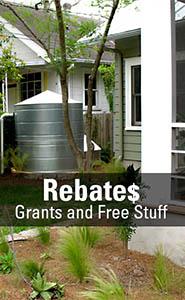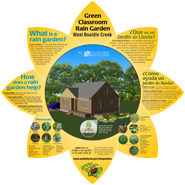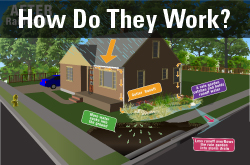A rain garden is a low area that absorbs and filters rainwater runoff that comes from roofs, sidewalks, and driveways. Rain runs off the hard surfaces, collects in the shallow depression, and slowly soaks into the soil. They are usually planted with colorful native plants and grasses.
<iframe width="560" height="315" src="https://www.youtube.com/embed/Imyhm7M_kYU?si=AgcTK3d2IT1BVwmM" title="YouTube video player" frameborder="0" allow="accelerometer; autoplay; clipboard-write; encrypted-media; gyroscope; picture-in-picture; web-share" referrerpolicy="strict-origin-when-cross-origin" allowfullscreen></iframe>




